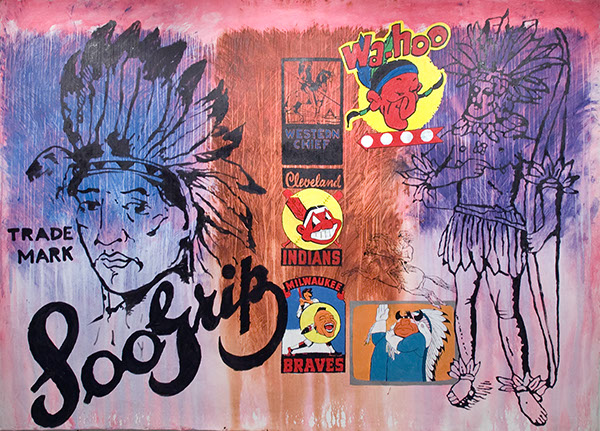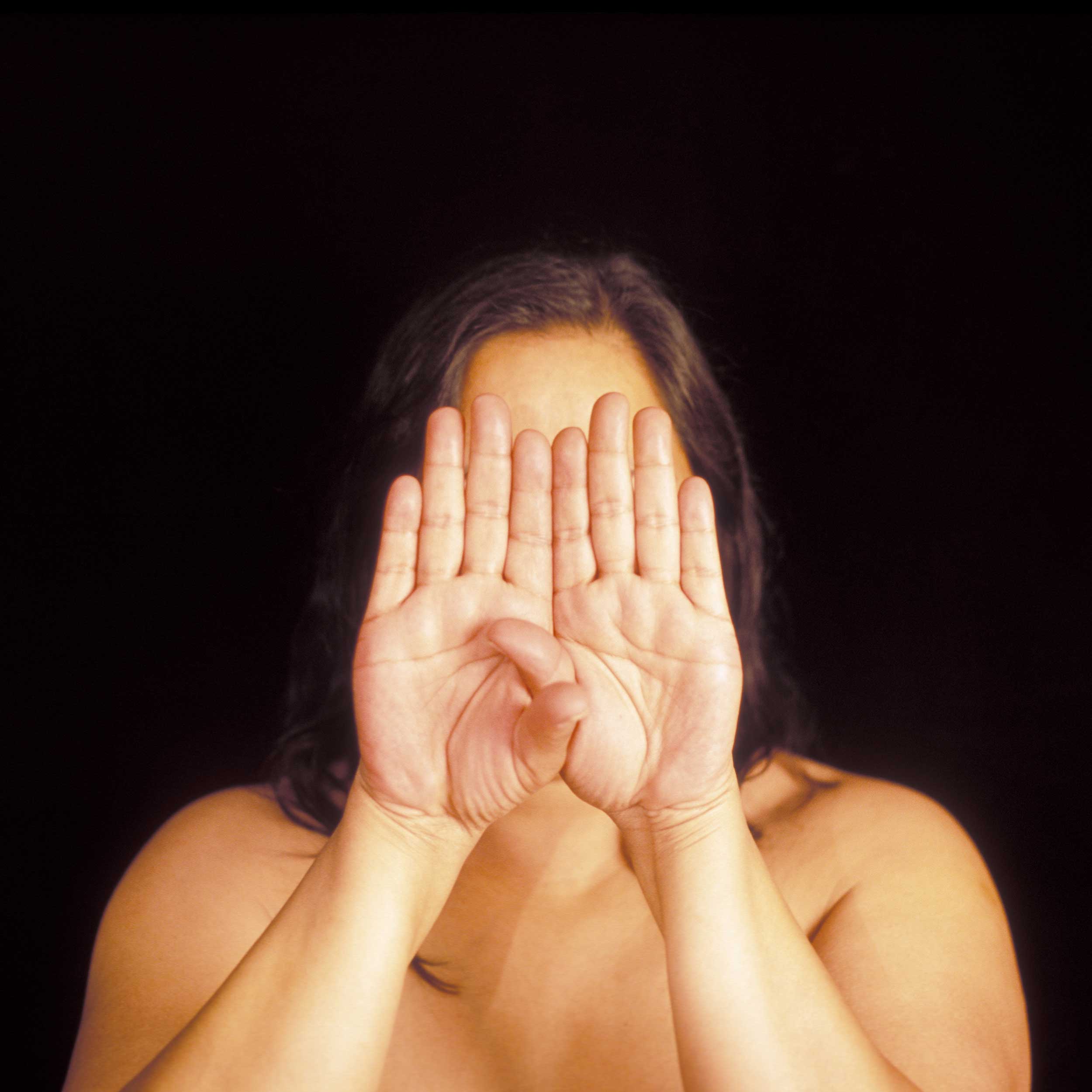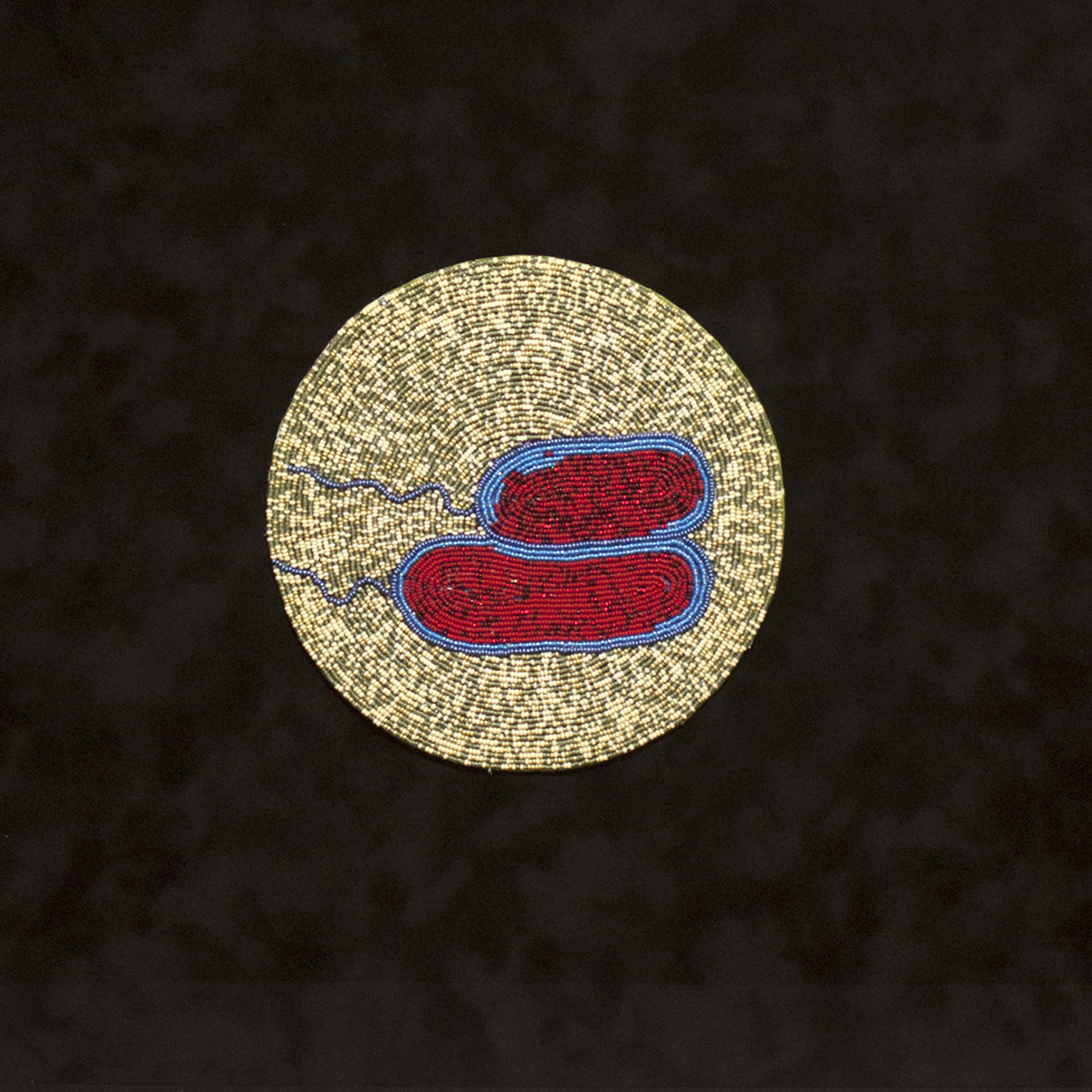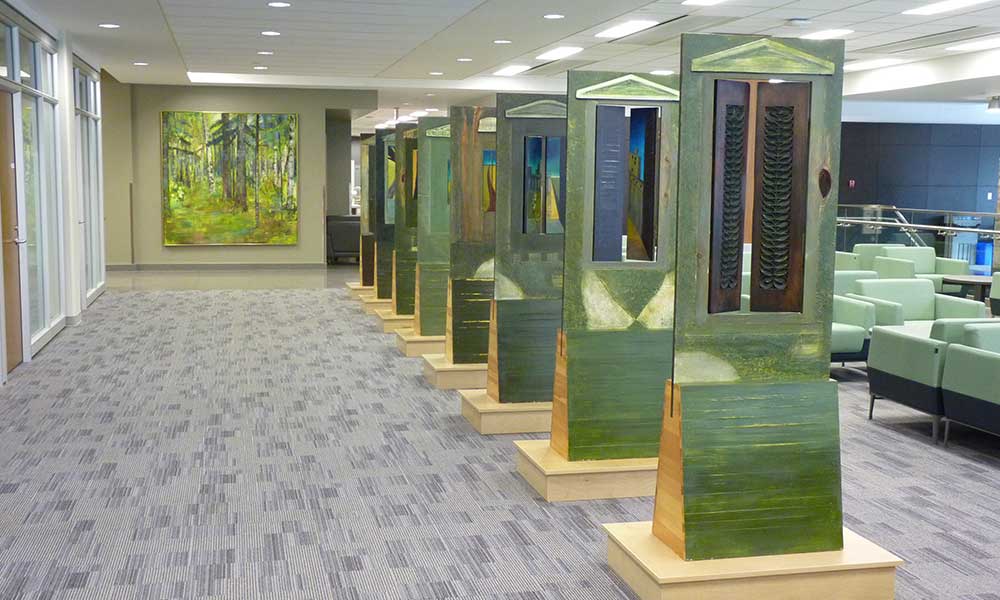About the Collection

The University Art Collection
The University of Saskatchewan began acquiring works of art in 1910, building a collection of over 6,000 spanning many art movements, styles, subjects and media. Guided by the vision of its first president, Walter Murray, the Collection’s earliest works include prominent and emerging artists of the day, including Group of Seven painters Arthur Lismer and Lawren Harris, and Saskatchewan based artists Frederick Loveroff, James Henderson and Ernest Lindner.
Augustus (Gus) Kenderdine was hired by President Murray in 1923 as a “presence’ on campus and in 1928, became the university’s first lecturer in art. His paintings are well-represented in the collection, but his lasting legacies are the Kenderdine Art Gallery and the Emma Lake/Kenderdine Campus.
The Kenderdine Art Gallery opened to the public in 1991, assisted by a gift from Gus Kenderdine’s daughter, May Beamish. Its mission was, in part, to create a venue for the presention of and engagement with art works from the Collection.
The Emma Lake campus was founded during the Depression in 1936 “with the intention of enabling young people to see beauty in the land when many saw only darkness and defeat.”[1] Beginning in 1955, workshops taught by prominent artists, such as Barnett Newman, Kenneth Noland, Jules Olitski, John Cage and renowned art critic Clement Greenberg, had a profound impact on the Saskatchewan artists who attended. Many of the artworks collected from the 1930s onward reflect Emma Lake’s extraordinary artistic activity, reputation and influence.

The Collection has grown to include important early Canadian works and modernist works from North America and Europe, as well as significant Inuit and Indigenous art objects and a large prairie folk art collection. Nearly 90% of its holdings are works by Canadian artists; of that more than 70% is produced by Saskatchewan artists. Approximately 10% of the works are by international artists. Of note are important early Canadian works and modernist works from North America and Europe.
Today, our mandate emphasizes the acquisition of art objects that reflect the cultural life, research objectives and imagination of the university community and Saskatchewan’s art community, as well as the public at large. In particular, we are focused on including the work and voices of Indigenous artists to advance our vision respecting the principles, values and Calls to Action of the Truth and Reconciliation Commission. Finally, the collection must be available as a vital educational resource to support the research, scholarly and artistic activities of our university. If faculty, a department, or unit would like to see a donation admitted into the collection, please contact the University of Saskatchewan Art Galleries and Collection in advance of acceptance.
Visit the SaskCollections database to browse the complete University Art Collection. SaskCollections is hosted by the Museums Association of Saskatchewan (MAS). For additional collection information or inquiries, please contact the University Art Collection.
Featured Artwork

“In these works, the hands over the faces do not completely hide the identity of the people represented and can be interpreted as expressing alternating gestures of acceptance and rejection, remembrance and loss, celebration of life and closing off of the self, a place where dichotomies are resolved and rejected…”
—Dan Ring, curator, from Lori Blondeau: Grace at the Mendel Art Gallery, Saskatoon (2006)
A survey exhibition titled Grace held at the College Art Galleries in 2018 revealed interdisciplinary artist Lori Blondeau’s working methodology of Indigenous storytelling, referring to personal and familial experiences. She appropriates dominant stereotypes and images from popular culture as a way to decolonize from the repression and consumption of Indigenous female identities. By reclaiming this imagery from the colonial gaze, Blondeau points to the racism, trauma and violence endured by Indigenous women.
Blondeau has, throughout her career, produced tough, powerful female personas in her performance and photography-based practice. Her extensive body of work continues to impact and influence Canadian contemporary art. A Cree/Saulteaux/Métis member of the George Gordon First Nation in Saskatchewan, Blondeau holds an MFA (2003) from the University of Saskatchewan and apprenticed with James Luna (1998–2001). In addition to her extensive exhibition history, she is a co-founder of the Indigenous artist collective TRIBE Inc. She has exhibited and performed nationally and internationally, including at the Banff Centre, Mendel Art Gallery (Saskatoon), Open Space (Victoria) and FOFA (Montreal). Blondeau was part of The Requickening Project with artist Shelly Niro at the 2007 Venice Biennale. Urban Shaman Contemporary Aboriginal Art Gallery (Winnipeg) presented a solo exhibition of her work in 2016.Art Acquisitions
The University of Saskatchewan Art Collection continues to build its holdings through purchases and donations. Prospective donations are subject to the approval of the Art Acquisitions Committee. The Collection is currently stored in an Art Vault equipped with humidity and temperature controls, and is located in the Peter MacKinnon Building on the ground floor.
The University Art Collection currently has a moratorium on collecting artwork. In recent years, our focus has centred the collection of artworks produced by BIPOC and LGBTQ2S+ artists. This is an act of reparation that acknowledges the systemic barriers to collection as well as the important role a collection plays in amplifying the values and belief systems of their host institution and stewards. As the University Art Collection has exceptional representation of early Modernist works, and has actively collected the artists that have represented settler/immigrant culture, we now seek improved balance and enrichment of our collection to actively demonstrate our institutionally stated values.
If you are interested in submitting an artwork for donation, or for more information on our acquistion process, please visit the Donors page.

Campus Art Placement Program
Over 2,000 works of art from the University of Saskatchewan Art Collection are on display in buildings and offices throughout campus via the Campus Art Placement Program. The program offers USask students, staff and faculty the opportunity to enhance their surroundings and benefit from everyday encounters with works of art. Our goal is to have as much of the collection on view as possible by placing artworks in offices, hallways, lobbies, lounges and other high traffic public spaces. Many areas feature thematic placements and temporary Collection-based exhibitions. To help monitor placed artworks, the University Art Galleries and Collection team has requested assistance from departments to maintain ongoing conversation, and report on the wellbeing of the collections holdings in their work areas.
If faculty, a department, or unit would like to see a donation admitted into the collection, please contact the University of Saskatchewan Art Galleries and Collection in advance of acceptance.
If you are interested in a placement for your department, please visit the Campus Art Placement Program page.

